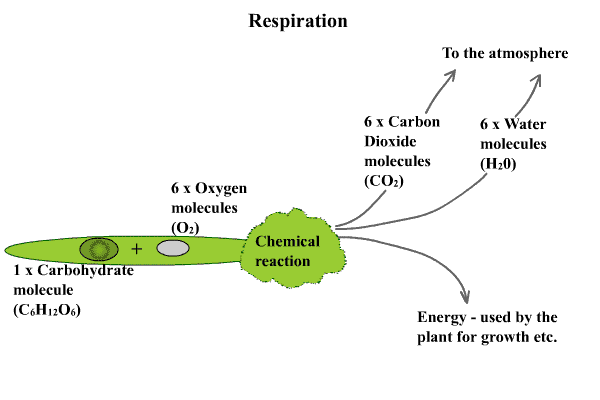Introduction
This article will outline the general process of respiration and will concentrate on the cool season grasses which predominate in the British Isles.
What is Respiration?
The breakdown (oxidation) of carbohydrates that have been made during photosynthesis.
Respiration takes place in the mitochondria (small threadlike or spherical membrane enclosed structure about 1 - 3 µ across, i.e. 0.001 - 0.003mm across) of plants.
The energy that is released from the breakdown of these foods is used for cell growth, maintenance and health, nutrient uptake and transport processes.
The chemical formula for this oxidation can be written as follows:
C6H12O6 + 6 O2 --------> 6 CO2 + 6 H2O + Energy
What this means is that a carbohydrate compound absorbs 6 molecules of oxygen which starts off the chemical reaction.
The result of the reaction is that 6 molecules of carbon dioxide and 6 molecules of water are produced. The energy that was trapped during photosynthesis is now released for use by the plant.
Both sides of the equation contain the same amount of molecules to ensure that it is properly balanced.

The carbon dioxide is released to the atmosphere as a gas, whilst water is released as water vapour.
Respiration occurs in both daylight and night-time.
More than 50% of the daily products of photosynthetic can be respired, but the amount will depend on many environmental factors.
Environmental Effects on Respiration
Respiration rates are affected by the following:
- they typically double for every 10°C rise in temperature between 5°C and 25°C;
- they effectively cease at temperatures near 0°C.
- waterlogging prevents aerobic respiration to occur, especially root respiration;
- a well aerated soil is required for aerobic respiration;
- nitrogen stimulates respiration rates due to increased growth;
- seedlings have higher rates than mature plants;
- shaving of turf will increase the use of stored carbohydrates from roots etc.;
- a gradual decline of carbohydrate reserves occurs over the winter period
Respiration has a higher optimum temperature than photosynthesis, which means that in practice reserves are given time to build up before being immediately used up.
